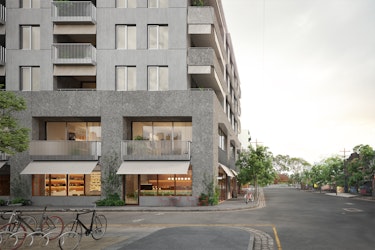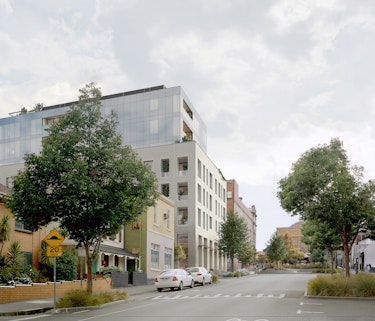When it comes to thinking about designs that will be beneficial for everyone who utilizes or is impacted by their spaces, including their clients, architects take a great deal of responsibility. Environmental, Social, and Governance metrics, or ESG as it is more widely called, are a new holistic approach to planning for a better future that many people are referring to. These topics include sustainability, social inclusion, economic opportunity, and overall urban equity.
ESG is a set of guidelines for assessing a product's sustainability in relation to its effects on the environment, society, and governance. This phrase is frequently used in conjunction with financial investing techniques, which provide direction to investors based on how well a company's practices respect the environment and society. However, in design, ESG analysis and implementation need thoughtful collaborations that investigate how structures might provide more than simply financial gains and how to define and categorize the experience component of design.
ESG principles are having an influence on the design sector through methods such as ecologically responsible demolition of old structures, the creation of user-friendly outdoor areas, community engagement for new developments, and appropriate implementation of labor norms on construction sites.
Utilizing a science-based methodology, we've discovered five ways for rethinking designing for ESG in order to have an influence on the ESG value chain.

Site Selection Tool for ESG
We must first determine which attributes are most appropriate for doing so before delving into the ESG measurements that can be impacted by design techniques. The future of smart asset purchase strategy must switch to a metric-informed equation because of the complexity of ESG factors and the general discrepancy among competing reporting techniques.
The programme generates a score for the present building as well as a score for the opportunity using data that is readily accessible and connected to six performance metrics. This tool may assist our customers in swiftly determining the risk and benefit associated with various property investment possibilities from a high-level ESG viewpoint, helping them make quick investment decisions while saving time and money.

Thermal Performance Reimagined
Once a location or asset has been chosen, we may assess where design techniques can provide co-benefits, which result in one system or design modification having a positive impact on all three ESG categories simultaneously rather than just one. For instance, one tendency we observe year after year is the blurring of the lines between internal and outside environments. The environmental problem is to balance thermal comfort with energy loss mitigation, whereas the cost of air conditioning is typically expressed in monetary terms. We can solve the energy inefficiency problem by introducing interventions like ceiling fans and radiant floor heating by rethinking this statistic as a tool to provide healthier, more effective ways of working. While this is going on, by addressing outdoor thermal comfort, we may allow social and wellbeing co-benefits, enhancing staff engagement and satisfaction while also promoting community connectedness.

Calibrating Event Experiences
The ways in, out, and around a room have a significant influence on how comfortable it feels, regardless of the type of space. Are the aisles congested? Is wayfinding simple to use? And how close together are the amenities? The establishment of measures for the distance between a visitor and an amenity and a guest to the event adds a whole new level of value when constructing a professional sports or entertainment facility. Here is a prospective new ESG statistic that includes the social and experiential value of places but has not yet been evaluated or validated. one created especially for the sporting and entertainment sectors.
By creating quantifiable scores, it will be possible to precisely measure the real worth of the experience and the price of a ticket, resulting in more equity for all visitor spaces. We can assist our customers in making planning decisions that have an influence on the fan experience for all visitors to sports venues by using metrics to guide design strategy using our unique measuring tools.

Retail Neighborhood Permeability
How should "home" make you feel? Everyone has a different response, and when it comes time to establish roots in a new place, the pressure of choosing the proper choice may fill an individual and a family with dread and worry. The closeness and availability of services like banks, grocery shops, a library, laundry facilities, gyms, and other commercial outlets is a crucial factor to consider. However, it's crucial to identify what homeowners and other occupants perceive an amenity vs a need for developers to make good societal effect with their initiatives. For instance, many people consider being close to a food store to be a need, whereas a gym may be considered more of an amenity.
Moving the S needle on a project's ESG effect will require measuring how close and accessible a community's demands are, and then designing a solution to meet those needs.

Workplace as the Antidote to Anxiety
Beyond the juice bar and yoga mat, wellness has developed into a need that individuals be acknowledged for who they are as people. In the meanwhile, we are aware that contented individuals are healthier, and that happier people are better for business. People who are happy at work are more productive, devoted to their jobs, and less inclined to leave the firm, which helps the business.
The four secular humanist pillars of relationship to self, relationship to others, relationship to nature, and relationship to the divine must all be considered in order to achieve individual pleasure, which is a complicated equation. Additionally, we assess personal well-being via eight different lenses, including professional, intellectual, social, emotional, physical, environmental, purposeful, and organisational culture. We have developed an Emotional Experience Index by measuring numerous KPIs within these categories. This index gives enterprises the key to rethinking corporate operational rules and programming the amount and availability of wellness services. These indices give us a way to gauge some of the most difficult indicators of space administration and societal effect.

Future Trends in ESG
In practically every sector, major business choices are streamlined by measuring key performance indicators of success. Even within sectors, it scales to measure corporate and employee performance. The industry has already evaluated what has worked and what hasn't; now is the time to put that information to use. Utilizing ESG and metrics analysis, design choices may be made with the intended outcomes in mind from the very beginning.
